Well, unsurprisingly, there were no magic solutions nor big announcements. Ministry staff confirmed they have received no directions from their superiors to start planning for a second bridge crossing of the Sooke River nor an alternative route out of Sooke. To raise these subjects as long-term realities that should be planned for now will require, as predicted below, more direct lobbying from Sooke council and our MLA. It will certainly be useful to know how much $$$ is dedicated to Hwy 14 in the Ministry's 10-year capital plan, one of the to-dos that Mr. Pearson and Haley promised to report back on.
That said, there are reasons to be cheerful about the prospect of smaller, incremental changes that will have positive impacts on road safety by all users and, hopefully, traffic congestion too ... most are pending available funding, of course. (This being an election year, my ten fingers/toes are crossed for one or more juicy #Sooke announcements/promises while also remaining entirely grateful for the $1m in active transportation grant funding recently dedicated to Charters Road and the Little River crossing.)
- Traffic light timings will be re-examined (last done two years ago) to ensure optimal flow
- Planning underway by MOTI and District staff for remake of the Idlemore intersection with Sooke Rd. for safety, flow and to accommodate new land uses by the T'Sou-ke on the north side.
- Confirmation of shovel-ready design for raised sidewalks and bike lanes in the town centre from ...
i) Phillips to Church (surveying this year in anticipation of intersection makeover at Charters/Sooke Rd.)
ii) Ed Macgregor Park to Whiffin Spit Rd. (survey/design completed in 2022/23)
- Reinvestigation of warning signalization at all crosswalks in the town centre and elsewhere on #14, Ed Macgregor Park included + potential need for crosswalks at Dover/Sooke Road and near Woodlands at Sooke Oceanside Brewery.
- Exploration of whether gaps in the cement median along the four-lane stretch can safety be created so as to provide turn opportunities during emergencies.
- Council will renew its ongoing conversation with SD #62 trustees about relocation of entrances/exits to schools on the highway when the two groups next gather for our twice-annual MOU meetings. Of particular importance are improved roadside safety measures/solutions at John Muir and Saseenos Elementary.
- Investigation of additional left-turn lanes off Sooke Road through the town centre.
- Reinvestigation of whether the shoulder east of the Prestige can be widened to better accommodate boat trailers or whether no parking signs will be required as the new sidewalk is built out.
- A closer look at needed improvements on the dangerous stretch (for drivers, pedestrians and cyclists) from Ella Road to Kemp Lake Road, crumbling road shoulders included.
- Open to investigating whether the logging roads to Shawnigan (detailed below) are in good enough shape to serve as an emergency route.
- Growing understanding that we must borrow funds to get the next phases (Throup to Phillips) of the connector road competed in the somewhat near-term future. [Council will discuss this during its strategic planning sessions in June, but stay tuned, i suspect, for news of a referendum in the event of any future by-elections late this year or in 2025.]
CAO Raechel Gray writes in her April 22 report to council (pg. 226):
"In a follow-up to the April 8th meeting with MOTI, our teams are debriefing and we will develop short-term action plan (i.e. emergency axis median removal-turn route during traffic incidents, light signal timing analysis, etc.) and medium (on the 2-5 year horizon). As this is finalized, I will provide further updates in future CAO Reports.
An additional short-term deliverable includes the establishment of a quarterly meeting system to ensure regular communication and greater proactive planning.
We hope that this will allow both agencies to be more responsive to the needs of our community. While historically, the teams met on an as-and-when needed, this standardized approach will facilitate a deeper understanding of each other's
goals and foster a more cohesive working relationship.
Specific to the long term, a greater discussion will be a part of Council’s strategic planning --- scheduled for June. This approach will allow Council to take in the comments received from the public alongside the comments from MOTI staff,
and consider other agencies as Council prioritizes advocacy items and establishes their action plan for service delivery in this area."
[I did my best to raise many of the questions/suggestions listed below that were received from the public. I'm sure i missed a few, however. Overall, this was a necessary and valuable exercise on an issue that will always and forever be front-and-centre for Sooke. I was struck by how aware the MOTI staff are of our local road issues (Haley said he monitors Sooke traffic social media pages daily) and their willingness to receive input on any matter, small or large. Email Mike Pearson at Michael.Pearson@gov.bc.ca (phone: 250-713-2815) and Shawn Haley at Shawn.Haley@gov.bc.ca (778-974-2627).]
Update: April 8
The BC Ministry of Transportation and Infrastructure's Vancouver Island District Director Michael Pearson and Operations Area Manager Shawn Haley will brave traffic and attend tonight's meeting. See CAO Gray's opening report in the agenda starting on pg. 51 for her summary of why we're meeting: 1. To acknowledge existing challenges with #14; 2. Recognize current and near-future works (by MOTI and the District alike) within the District's jurisdiction; and 3. Foster a collective understanding of MOTI's role in propelling us towards viable solutions.
The MOTI reps are pros who’ve been through sessions like this elsewhere in the past, striving to keep local wants in perspective given budget realities and the hot competition for funding from all growing BC communities. Haley spoke to the Cowichan Valley Regional Board, for instance, in January, 2023. That discussion boiled down to two key points: i) “it is a matter of only having so much money for road repairs and upgrades; we have to make it go far and that can be pretty challenging sometimes”; and ii) "yes, of course, going political helps" (or, as the reporter put it, "initiatives by local politicians to persuade ministry officials to get work done can sometimes have the desired results.") Same conclusions tonight, I anticipate.
The agenda includes 10 random pages of public comment (from 64 respondents). I've divided them up below into categories of primary responsibility while recognizing that any/all work on #14 to address various issues requires collaborative effort from all parties. The following captures (roughly) most of the comments; some suggestions are duplicated.
Ministry of Transportation and Infrastructure
Congestion
- 33 minutes to VGH from Sooke in light traffic … afternoon commute is now 90 minutes
- What measures to alleviate heavy congestion on Sooke Rd?
- Bottleneck at Sooke end of new four-lane – severe at rush hours.
- Afternoon congestion on #14 entering Sooke
- Speed limit of 60kmph too slow in new four lanes
Congestion Solutions
- Traffic light timings at Sooke River Road, Phillips, Church Rd., Otter Point
- Turn lanes from Saseenos to Otter Point
- Whole highway as a three-lane route with middle lane switching to handle rush-hour volume
- Left-hand turn lanes to all side streets between Langford and Sooke
- Roundabouts rather than stoplights at Sooke River Rd., Phillips and Church
Safety
- More reflectors needed along highway from the new four lanes west into Sooke.
- Paint on road lines is challenging to see on dark nights in the rain
- More lights on #14
- Monitoring of line painting and road reflectors
- Lack of a streetlight at Charters – previous one not replaced after it was damaged
- Sooke River bridge crossing is dangerous for cyclists and pedestrians
- Underground tunnel or pedestrian overpass for Saseenos Elementary
- Galloping Goose Highway 14 crossing near Cooper’s Cove
Sidewalks
- Pedestrian safety on West Coast Rd. between Maple and Whiffin Spit Rd.
- Sidewalks east and west along Route 14 into Sooke core
- Plans for sidewalk infrastructure
- Narrow roads with no sidewalks or shoulders and the constant gravel trucks
- Improved sidewalks connecting Sooke core to Whiffin Spit
- Pedestrian safety in general
- Attention to area from Gordon’s Beach to Ella Road … narrow, crumbling shoulders … logging trucks destroying the shoulders … speeding (80kmph) by semis, gravel trucks.
Crosswalks
- All Hwy 14 crosswalks should have flashing lights, i.e., John Muir Elementary, Ed Macgregor Park, town centre, Sasseenos Elementary
- Required: Safe crossing/crosswalk at Woodlands near "The Hub" (site of Sooke Oceanside Brewery)
- Dover St. and Drennan St. – crosswalks needed … no safe space to walk along side of the road … separated sidewalk/bike lane required
MOTI Long-Term Planning
- Another road needed
- Where is the bypass and bridge promised in 2005?
- Second bridge or twin the current bridge
- Extend Edward Milne Road to Saseenos elementary
- Alternate routes in and out of Sooke
- Top priority are four lanes … not bike lanes
- New highway, no more Band-Aid fixes
- Has a four-lane highway between discussed from west shore to Sooke?
- Four lanes all the way to Sooke
- “Stop this madness, we need a new road”
Alternative Travel Modes
- Commuter train corridor, LRT or high-speed train tracks
- Monorail over the Galloping Goose trail
- Railway network system
Miscellaneous
- What became of the “Welcome to Sooke” sign at Connie Road?
- Left-turn signal at West Shore Parkway
- What happens when Hwy 14 is closed by a MVI when an earthquake or tsunami hits?
- Provincial housing mandates contradict the realities of #14
- Max speed of 60km on the four-lanes is problematic
- Safe, speedy transit for ambulance, police and fire services is required on a two-lane road subject to closure
- Speeding and tailgating vehicles on #14
- "Remove the carbon tax"
District of Sooke
- Full and immediate stop to residential growth
- Stop all building until we get a new road
- Road infrastructure not matching the rate of home building
- Evacuation of Sooke residents during a disaster
- Emergency evacuation planning
- "Sooke Fire emergency plan is a joke" [Editorial comment: A classic know-nothing blast from the cheap seats. Check out this blog post, please and thanks.]
- Any plan for a bypass road?
- Winnipeg Road needs paving
- Pascoe Road connection to Phillips
- Better education for drivers re: speeding, tailgating, overtaking, merging, roundabout etiquette
SD #62
- Get schools off the highway
- School zones along #14 x 3
- pick-up places and vehicle road access need to be located away from the highway
- Sooke Elementary timeline for rebuild
- School zones – John Muir, lack of sidewalks
BC Transit
- Bring back double-deckers + more bus drivers
- Direct route to Victoria without Langford transfer during rush hours
- Too many, too frequent bus cancellations
Save the date: Monday, April 8 at 7 PM
Senior directors from the Ministry of Transportation and Infrastructure will be in chambers at the invitation of Sooke Council to share their short, medium and longer-term plans for Highway 14.
District and MOTI staff continue a long-established working relationship guided by a Memorandum of Understanding, however this will be the first MOTI public presentation in Sooke since the Dec. 2019 open house at EMCS that was a prelude to the announcement of the four-lane section at Gillespie Road. Since that $65m project opened last July , the afternoon westbound congestion (at its peak from 3:15 to 5:45 PM approx.) has seemingly only grown progressively worse for our 2,285 (2021 census) commuters who travel into Greater Victoria and back on a more-or-less daily basis Monday to Friday.
Safe bet: Bumper-to-bumper traffic in chambers that night, with overflow space available in the adjoining firefighters' lounge. Focal points of the Q&A led by Council will resolve around long-term road network planning and current traffic congestion and public safety issues on #14, especially in the vicinity of our three road-fronting elementary schools and the boat-trailer zone east of the Prestige.
The District invites everyone to submit questions by March 24 for Council to ask. Submit a comment online or phone it in to 250-642-1634. Staff will then organize and compile queries for the Q&A. This approach is necessary since live public comment would result in a marathon meeting and inevitable duplication of shared observations.
The night's ultimate questions: What, among all its many other BC-wide commitments, has MOTI budgeted for Highway 14 in its 10-year capital spending plan? And what further say does the District have in shaping future iterations of same? (All credit to Don Fast, Sooke region resident and a former Deputy Minister of Community, Sport and Cultural Development, for raising this point at the recent Coffee With Council.)
For our part, Council and the District remain committed to realistic yet ASAP build-out of the long-awaited/needed bypass route from Phillips to the Ella Road end of Grant Road West. See the map attached below for the current phased plan for the eastern side of this route. (See original District of Sooke Business Case for the Phillips to Charters stretch.)
Recommended reading to start from the District:
* Navigating Sooke: Transforming Traffic Challenges into Solutions (January 2024, all you need really)
* Transportation Master Plan Implementation website page
* Traffic Advisories and related resources (updated routinely)
Sooke’s pending OCP includes 14 action items related to transportation in its Implementation Plan (see pp. 161-162). Our OCP, like all others in BC, is on hold awaiting directions from the Province. The transportation priorities (all either ongoing or short-term) include:
* "Update the existing MOU with MOTI in order to realize shared multi-modal objectives for Highway 14, the Grant Road Connector and associated municipal streets"
* "Ensure that school site design provides safe access in relation to Highway 14"
* "Support work-from-home, teleworking and co-work spaces in the town centre, carpooling, car share operators and other initiatives to reduce commuter travel"
* "Continue to work with BC Transit and MOTI to identify, plan and construct transit priority measures" as well as expanded regional and local service.
* "Town Centre parking management study" and review of on-and-off street parking management practices.
As a warm-up for April 8, I'm pulling elements from earlier Highway 14 and local road network blog posts while adding additional content to create the info gridlock that follows ...
* Highway 14 Revisited: Four-Lane Opening Edition (July 22, 2022)
* What's Next For Sooke's Evolving Road, Sidewalk and Roundabout Network (Jan. 20, 2021)
* Highway 14 Revisited: Spring 2019 Edition (March 29, 2019)
* Fresh Paint, Familiar Refrain for Sooke Road (Nov. 17, 2018)
Worth noting that Highway 14's limitations have long been recognized. An Urban Systems "Highway 14 Corridor Study" released in Dec. 2008 begins its conclusions thus: "The capacity of the existing two-lane Highway 14 corridor is being reached and will continue to degrade with increased traffic volume associated with continued growth and development in the District of Sooke." The study rules out four-lane expansion and alternate routes as too costly while recommending incremental and piecemeal upgrades of the kind MOTI has consistently delivered over the last 15 years. More please and thanks.
(I'll be cleaning up and augmenting this post in the weeks ahead ... the road goes ever on, as Bilbo Baggins sang.)
Motor City Madness: Congestion
I've gratefully not been a commuter since Carolyn and I lived in Vancouver's Kerrisdale neighbourhood in the 1990s and drove a half-hour each way through thick downtown traffic to reach an office on West Hastings. We've both operated home-based businesses during our 20 years here. So I can only empathize with how maddening the current daily slow-moving gridlock (aka the "Sooke Slink") is for our 60% of working adults who commute.
I've certainly driven the road hundreds of time at various hours these last two decades and experienced traffic hold-ups and my small share of accident days that require patience and/or the Metchosin/East Sooke loop detour when possible. From what i've read online, and in my limited, once-per-week-at-most experience these last six months, the now routine afternoon traffic jam starts at the Sooke end of the new four-lane and stop-go continues through the town centre. It adds a half hour or more to the commute home. (Use the "Replay of the Day" function at BC Highway Cams – Highway 14 to stream the previous 24 hours at various spots along the route.)
The morning drive into Victoria famously slows, of course, with the Colwood Crawl (see this Nov. 2018 Times Colonist column by the much-missed Jack Knox: "Is the Colwood Crawl Driving You Crazy?"). My most recent early morning trip found the Trans-Canada backed-up to the Westshore Parkway at 8 AM last month; congestion, in my experience, usually begins just past Veterans' Memorial and continues through the Mackenzie exchange. At a recent CRD Parks meeting that began at 9 AM, directors from Colwood and Langford noted the heavy traffic; Colwood's Mayor had left home at 7:30 AM and still barely made it in time, he said.
For those in the daily thick of it, this new reality is deeply frustrating at the least and increasingly maddening, the cause of real anger. Drivers understandably want relief from this "new normal," as does Mayor Tait and Council. (I've attached below a file of recent social media commentary, with names removed. It's a brief but telling taste of what commuters are feeling and sharing daily. The consensus view: Sooke's growth has outpaced road capacities and drivers are suffering the consequences daily.)
[Also check this lively Reddit thread re: “How do we fix Victoria’s traffic problems”. And this 2013 Vibrant Victoria thread started the day after an accident that generated fears of a "Sooke crawl."
Stating the obvious yet again, but the one road into Greater Victoria has always been a central fact of life out here. An Elida Peers history of Sooke Road in the Sooke News Mirror (July 2018) is titled "Never Easy to Navigate" for good reason.
All-day local traffic volume along Sooke Road into the town centre is also alarming, and I'm continually amazed at the dense flow on weekends. (No less than 17,390 trips are made daily by Sooke residents within the District according to the CRD’s latest survey of regional travel patterns; that matches the inter-regional commuter volume.)
Our town's charms remain largely intact once you're off the main drag, but behind the wheel with eyes focused on the road and tail lights winking ahead, it is easy to mistake Sooke for a bog-standard urban nightmare when inching past Woodlands, crossing the river and slowly proceeding up the hill to the Church Road stop light.
Facts, Stats, Data
The average there-and-back traffic as measured by MOTI at our end of the Sookehalla was 17,847 vehicles per day in 2022 -- up 4k or approx. 25% since a decade ago. (The summer numbers are +1,000 more per day when tourists and daytrippers are factored in.) This more or less matches our population percentage increase over this same period. (See links and details re: traffic counts further down this post)
The number of insured motor vehicles in Sooke rose 12% in the 2018-22 period to 12,964 vehicles, according to ICBC statistics released last fall.
The 2021 census has numbers related to commuting:
~ 2,825 (66%) Sooke residents commute elsewhere in Greater Victoria vs. 1,425 (33%) of us who travel within the DOS
~ Commute times range from less than 15 minutes (26.2% of us) to 30-45 minutes (25.9%) to more than an hour (13.8% or 785 drivers).
The latest five-year CRD Destination Origin Household Travel Survey released last fall tracks the travel modes and patterns of Greater Victoria residents during an average 24-hour weekday in the fall. Out here and on the peninsula, we're necessarily wed to our automobiles, the study confirms, though the pandemic kickstarted a now sadly diminishing practice of telecommuting from home. That said, "survey data show that 32% of full-time workers who usually commute to an external workplace now work from home at least once a week."
The numbers cited in the CRD report are about 5% higher than those in the aforementioned MOTI counts for reasons I'm not clear about. Sooke data (pp. 197/98) reveals that 20,000 total trips (there and back) are made from Sooke on the average fall weekday into other CRD municipalities. It bears repeating that an additional 17,390 trips are made daily by Sooke residents within the District to schools, shops, places of employment, parks ... and surely some joyrides too.
Worth noting that the average-sized CRD household (2.3 people) has access to 1.56 motor vehicles (8% of them EVs) and a growing number of e-bikes and improving transit services in the core especially (i.e., RapidBus). Sooke has the highest municipal count at nearly 2 cars per household.
MOTI/District Collaboration
The Ministry of Transportation and Infrastructure (MOTI) is responsible for all works and improvements to Highway 14 (aka Sooke Road until you reach the town centre, as you know, then West Coast Road beyond).
District and MOTI collaboration is rooted in a 2011 Memorandum of Understanding last amended in 2013. It confirms that the two parties will consult on phased work on Hwy 14 as well as the town centre bypass (aka "Grant Road connector"). Among other technical matters, the document cites the need for a second bridge crossing of the Sooke River to facilitate emergency access.
With the four-lane stretch and road widening in Otter Point/Shirley, MOTI has completed its latest set of multi-year Highway 14 Corridor Improvements. These involved north of $100m in regional road projects this last decade, most of it at the direction of the BC NDP and our former MLA, Premier Horgan. Many since 2018 are captured in this MOTI Flickr photo file. These include $10m worth of smaller upgrades along the corridor -- bus stops, pull-over lanes (Muir Creek, Sombrio), safety signs, street lighting from Coopers Cove into Langford, line repainting and the installation of hundreds of roadside markers.
Under the BC Liberals in previous years, MOTI certainly did act when required, i.e., the fix of the flood-prone area near West Coast Tire at Impala Rd. in 2012 and the MOU the Ministry signed with the District in Nov. 2014 that enabled construction of the town-centre roundabout.
In total, and in my experience these last 20 years in Sooke, #14 is a vastly smoother, safer, better-illuminated route than formerly the case, especially on wet winter nights heading into Langford ~ blinded by an endless stream of halogen headlights and faced with heart-in-mouth corners and dips in the road. It's for good, ICBC-certified reasons that the 4-lanes at 17 Mile were first/foremost a response to incidents at Gillespie and Sooke Rd., the most crash-prone spot in the region.
For our part, Council and the District is committed to implementing the District's 2020 Active Transportation Master Plan (TMP). It focuses on a clear-cut, legislated Sooke responsibility, namely our municipal road, sidewalk and bike lane network.
The top TMP priority by far is the build-out of the town-centre bypass in phases over the next decade minimum. (see the image below for project plan for the section east of Church Rd.) The option to exit Sooke Road onto Phillips once across the bridge should ease congestion on #14 and address what the TMP calls "poor network connectivity" issues with secondary streets in town.
As you'll see in the District project map below, the price-tag for the section from Church to Phillips Road alone is a daunting $32m in 2023 dollars. Funding will require a combination of grants, Development Cost Charges and, if we're willing to accept significant property tax increases over two decades, long-term borrowing from the Municipal Finance Authority (currently lending at a 4.97% rate over 20+ years). The latter option would require a referendum and a majority vote in favour.
A local $$$$ commitment of that kind by Sooke would certainly need to be matched by significant MOTI action on its responsibilities as defined by the MOU. A decade ago, the District paid for the construction of Wadams Way, and that in turn encouraged the Province to add new sidewalks and a roundabout to the town centre.
Advocacy With the Province
Sooke Councils, CRD regional directors and independent community groups and individuals have advocated for improvements over the many decades as the road continues to evolve from trail to stagecoach route to dirt road to today's two-lane highway with a pair of four-lane sections. Relatively recent examples include:
* "Mayors Call for Action" (Maja Tait, Stew Young, Jan. 2018 ... this followed and precedes advocacy over the years from Sooke councils. There have also been UBCM meetings with various Ministers and Ministry officials, and the subject has surely been a favourite whenever our Mayors have met with MLAs and MPs.)
* The #DividedBy14 initiative of the Sooke Economic Development Group (a social media campaign launched in spring 2017 by David Evans, Doug Wittich, Jeremy Wilson and colleagues + Sooke News Mirror follow-up, Sept. 2017)
* Near daily commentary on Sooke social media pages (always)
* Otter Point and Shirley Residents & Ratepayers Association (Aug. 2018, includes road condition report between Otter Point and Port Renfrew)
* Sooke Chamber of Commerce (letter from then-Chamber President Sean Dyble no longer online + related SNM story, Dec. 2015)
* Westshore Voice News article (re: Transition Sooke's "Rethinking Traffic As Usual" workshop in Nov. 2017)
Master Planning and the #14 Wish List
April 8 is an opportunity to learn more about MOTI's plans for its contribution to our road network, especially the stretch from Kaltasin to Otter Point Rd. inclusive of the planned bypass route. Its also a chance to renew the conversation on how we can continue with the long-game goals of transforming Sooke into a complete community, reducing carbon pollution and creating a happier, more functional hometown through better, smarter lifestyle choices.
There's a legacy of much talk and subsequent action over the decades, long before and continuing after first Mayor Ed Macgregor launched Sooke as a municipality 25 years ago. More practically, MOTI has established wide road dedications in certain key spots to facilitate future road construction.
Naturally, Sooke can expect only its far share of funding from MOTI in its 10-year and longer financial plans. I'd be interested in knowing how much money that might be over what time period. It would then be logical to cost out the various wishes, wants and necessities, and determine how best to spend the money. (It's MOTI's call, of course, as with the new four-lane section, which was presented largely as a fait accompli to the District.)
What might that menu of options include? Our hope is that a flood of good suggestions, already aired repeatedly in many forums recently and over the years, will be submitted for April 8. Here's a start based on ideas i've heard.
* Suggestions contained in the Highway 14 Corridor Improvements Community Engagement (2018), including sections of road realignment, additional pull-overs and transit improvements. (see screenshots below).
* Third lane from the Sookeahalla to the new four-lane (suggested in the 2018 Corridor Improvement report, possibly an HOV lane reserved for buses and multi-passenger vehicles).
* Pedestrian bridge @ Galloping Goose road crossing at Cooper's Cove
* Cooper's Cove traffic safety improvements (as contemplated during 2019/20 four-lane planning)
* Pedestrian bridge @ Saseenos Elementary (though the school's planned closure at some point in future will render it obsolete.)
* Roundabout at Idlemore that will take traffic from an extended Edward Milne Rd.
* Second bridge crossing, either parallel with the current one (at site of the original bridge crossing, perhaps doubled up like the bridge into Duncan) or, as once planned, via straight-shot extension of Edward Milne Rd. to connect with Phillips.
* Intersection improvements at Phillips, Charters, Church, Otter Pt. and Grant Rd. West (as per TMP Action Item 7.13)
* Addition of turning lanes in the town centre as identified in a 2008 MOTI report (one such lane is planned as an eastbound access to Sooke Elementary pending changes to the current school site)
* Crosswalk warning lighting at Ed Macgregor Park and the three town centre crossings
* Southside sidewalk from Ed Macgregor to Whiffin Spit Road (incl. possible no-boat-trailer restrictions east of the Prestige)
* Safety improvements and expanded drop-off points at John Muir Elementary
All this is hugely expensive, and MOTI's budget only goes so far with communities our size at a time when the big bucks must necessarily be dedicated to this generation's transportation mega projects -- the Pattullo Bridge replacement in New Westminster ($1.4b), the Fraser River Tunnel project ($4.4 billion), Surrey Skytrain extension ($4b) and the Broadway Ave. subway system in Vancouver ($2.8b).
Expecting MOTI to find another $1b+ to build an alternate route for Sooke's small share of commuters given its mandate to serve all of BC's 3.8 million licensed drivers could well be unrealistic. But the MOU does commit both parties to systematic improvements over time.
Patiently executing any master list like this would need to include consideration of related growth factors, including hopefully near-future extension of the sewer system east to Kaltasin and the fact that the CRD Regional Water Supply Master Plan has identified a new East-West Connector (M12) water line that would link the proposed Goldstream water filtration plant to the Juan de Fuca Water Distribution Service sometime in the 2030s. That new pipeline will follow a stretch of the highway and deliver water to North Sooke.
Remedies: Unlocking Gridlock
- District of Sooke Transportation Master Plan Implementation website page
- Navigating the Sooke Commute - Moving Forward (February, 2024)
Some combination of all of the following (in no particular order) is required to reduce traffic volume and/or improve flow while also reducing GHG emissions and creating a more complete, maybe even happier, community.
An outright moratorium on new building permits is the seemingly most logical short-term solution, however landowners have the legal right to build according to the terms of the zoning bylaw. This said, it's important to reiterate that we have approx. 900 new housing units (more than two-thirds of them rentals) approved for construction or recently complete ... and at least 1,000 more in the pipeline. In Sooke, we align with the rest of the country in facing an affordability crisis, but arguably not a housing crisis unless we're talking about our need for more non-profit and cooperative housing.
* Community Economic Development, i.e. more jobs in Sooke: The District's CED Strategy (2021) identifies an "Employment Lands Strategy" that would kickstart activity on Sooke's limited supply of commercial and industrial-zoned lands ~ much of it east of the Sooke River, dependent on sewer servicing and suitable for light industrial business parks and other commercial activities. Development of Sooke's oceanfront "blue/green" economic potential is also highlighted.
* Telecommuting: Both the pending OCP (Action #8) and the Climate Action Plan call for dedicated telecommunicating office space in town as a proven means to reduce traffic. WorkLink has plans to build such a multi-storey space as it continues developing its Church Road property. A small teleworking hub is set for future residents of the Wadams Farm development. And, through the Climate Action Committee, the District wrote the Minister of Citizen Services in 2022 asking for a Sooke telecommuting hub for provincial government employees -- 237 of whom live in the District. Thanks for writing, came the reply, and we'll consider it.
* Transit Ridership: BC Transit's Sooke Local Area Service Plan is underway with increased service into Langford (though no longer on double-deckers) and slow introduction of new neighbourhood routes. Continued growth of service hours will encourage mode shift, as well continued expansion of Blink RapidBus. Its dedicated bus lanes from Langford into the core are shaving significant time off rush-hour travel (as would that much-anticipated day when commuter rail service is available from Langford's West Hills station). A new phase of RapidBus lane expansion from the Hwy #1/Six Mile Road interchange to Atkins Road (near Thetis Lake Park) and Whale Road (at the JDF Recreation Centre) is set to begin later this year. See Westshore Line Rapid Bus Implementation Strategy (June 2023) +
BC Transit documents progress on the overall system to date.
- Sooke already has the highest per-capita bus ridership in the CRD, but those numbers must keep rising to reduce traffic volume. Cllr. Tony St-Pierre recently received council approval to approach the Victoria Regional Transit Commission with a request for a cost and benefit analysis into how a free-fare system on underperforming (read: mostly empty) local routes 63 and 64 would boost ridership. Mission successful and a staff report is forthcoming.
- Local Heather Nelson has launched a petition calling for direct service into Victoria. She writes: “Currently, the commute between Sooke and downtown Victoria takes 1.5-2 hours due to having to go to Langford exchange and switch buses to the 95. This not only prolongs our travel time but also makes us dependent on the unpredictable waiting times at the exchange - sometimes as long as 40 minutes. The proposed change would reroute bus number 61 directly to downtown Victoria via Langford exchange without lessening people's access to Langford. This modification would reduce our commuting time by up to half an hour each way.” (1,249 signatures as of March 31).
- Victoria Regional Transit System's 10-Year Vision (October, 2023) recognizes rapid population growth on the Westshore (+22% by 2038) and the need for additional service out our way. A “Sooke transit hub” (?) is listed among its short-term priorities. BC Transit is intending to add (given budget approval) 90,000 more service hours as per its 2023-2026 Service Expansion Plan + BC Transit Fare Strategy (Sept. 2023)
- Metchosin and View Royal recently revived the free-transit dream with successful motions that have triggered renewed advocacy with the Province; a free-fare resolution from the City of Victoria was narrowly defeated at the 2019 (?) UBCM convention. In the first such province-wide initiative in Canada, the BC NDP made transit free for children 12 and under in 2021.
- The Province is developing a Clean Transportation Action Plan (delayed, but due pre-election one would assume) that will address five goals: reducing vehicle kilometers traveled (VKT) 25% by 2030; shifting to more efficient modes; increasing vehicle efficiency; transitioning the market to zero-emission vehicles; and cleaner fuels. See UBCM PDF. (BC’s missing-middle housing legislation inviting density where water and sewer services exist is strongly aligned with GHG emission and VKT reduction objectives.) For more on "traffic evaporation" strategies, see this recent Plan Canada article written by Greater Victoria Acting Together's Eric Doherty.
* Alleviating School Congestion: As we all know, three elementary schools front the main road. Morning and especially afternoon drop-off/pick-up times contribute to congestion. Getting their entrances/exits moved off the road is a key talking point at MOU meetings between Council and SD #62 trustees. The top Milnes Landing priority for SD #62 is now a new-build Sooke Elementary to replace what is currently the oldest still-operating elementary school in BC. The plan is to locate the school at the Country Road end of its expansive property. (This re-prioritization necessarily bumps the planned Sunriver Elementary into the 2030s; at that point, as I understand it, Saseenos Elementary students will relocate there and that school will close.)
* Synchronized Lights: There's a science to ensuring maximal flow in one direction or other based on rush-hour volumes. This is already in play on #14 and is constantly under review. See MOTI Signal Design Manual (2019).
* TMP "Roundabouts First" Policy: Love 'em (as most do) or hate 'em, the District has embedded this approach in its master planning. As the Ministry states, “roundabouts are the go-to design for improved safety and traffic flow.” A big question is whether MOTI will incorporate roundabouts into its future highway upgrades. This didn't happen at Sooke River Road circa 2018 given the cost of land expropriation, as MOTI reps told us at the EMCS open house that year. Staff have warned that a roundabout isn't possible at Charters Road given lack of available land, and that a traffic signal is required here halfway up the hill. Next question: Might a roundabout be possible at Phillips and Sooke Road in place of the current light? It would seem essential to handle traffic flowing on and off the highway when the connector route is completed.
[To quote Sooke's TMP in full (pg. 48): "A roundabout is to be considered first for any intersection requiring traffic control (i.e., signalization). A feasibility study should be undertaken for each intersection as it requires upgrades to determine if a roundabout can be accommodated at the intersection. The evaluation should consider traffic operations (i.e., delays, queues, emissions), intersection geometry, drainage and right-of-way identification. Commonly incorrectly identified as traffic calming, roundabouts are actually a traffic control device that may lead to improved intersection traffic performance benefits, particularly where traffic volumes are balanced on all intersection legs, as well as traffic safety benefits by eliminating the potential for severe collisions (i.e., head-on or t-bone). In order to accommodate all users safely, it is important that roundabouts are designed so that they dedicate space to people walking, people cycling, and facilitate appropriate vehicle speeds."]
* Carpooling: The District is exploring the possibility of a mobile app and collaboration with major employers (i.e., UVic, Esquimalt dockyards, Government of BC) to promote carpooling. Residents are encouraged to join the Facebook Sooke Carpool Group for ride-sharing opportunities.
* Reducing Mishaps: Red-Light/Speed Cameras At High-Incident Intersections: A fender bender or worse can create long-lines of stalled traffic. Tailgating on recent motions by the CRD and other local governments, I brought forward a council-approved motion early this year to write the Province seeking admission into an expanded red-light and speed-camera program. We cited intersections with 20 or more "casualty" (involving injuries) and "property damage-only" incidents during ICBC's 2018-2022 reporting period. These are at the Sooke Road intersections of Otter Point, Church, Sooke River Road and, top of the list, Phillips, with 82 crashes. We'd be happy with one at least given the six-figure cost of the cameras. There are currently 140 such unblinking eyes operating in BC, but only two in Greater Victoria (Shelbourne/Hillside and Tillicum/Hwy #1). After decades of education about speeding and traffic accidents, the CRD Traffic Safety Commission now argues that enforcement is the best way to reduce incidents. As CRD Chair Colin Plant said the other month, "commit the crime, pay the fine" resonates with most people (a recent Mario Canseco survey shows 70%+ public support for the cameras.)
An Alternate Route
The second last page of MOTI's Highway 14 Corridor Improvement Study (see the "presentation materials" link under June 19, 2018 Open House and the image below) is titled "Why not build a new highway?" (i.e., a four lane from Langford to Sooke).
"The mountainous terrain is a major obstacle in designing and constructing an entirely new highway between Langford and Sooke. Challenges include:
~ Need to route the highway around the higher terrain/mountain peaks
~ Much steeper grades affecting truck traffic
~ Increased snowfall, as some of the route would be above a 200m elevation
~ Need for multiple bridges to span major creeks
~ Environmental impacts
~ Need to pass through one or more regional parks
~ Construction would require major rock cuts and retaining walls
~ High cost ($20-50M per kilometre)
The distance from the end of the Sookahalla to Cooper's Cove is approx. 12km (if indeed I have worked things out correctly with the Google map calculator). The anticipated project cost of a four-lane Hwy #14 along that stretch, therefore, is $240-$600m in deflated 2018 dollars, and likely approaching $1 billion now.
- Per the TMP (pg. 44), "a secondary access to Sooke and alternate route to Highway 14 has historically been considered. Feedback received from Sooke residents throughout the TMP process reiterated the importance of this connection in addressing reliability challenges related to closures on Highway 14 ... While a secondary access is not specifically highlighted, the planned improvements identified in the TMP align with and would not preclude the long-term pursuit of a secondary access and alternative to Highway 14. This initiative would be pursued in coordination with the Ministry and is another example of the importance of collaboration between the two organizations in addressing local transportation challenges."
- The Pacific Marine Circle Route through Renfrew to Lake Cowichan is too long and winding to qualify.
- A leading Sooke community member has mapped an alternate route heading northeast from Sooke River Road through the Sooke Hills watershed. It would then link up at the Langford end of Humpback Rd. and onward to the West Shore Parkway, I believe. This has been presented to MOTI for consideration in the past.
- Malahat Segment Detour Route Planning (Nov. 2019; see full report) delivered a resounding 'no' to any possible escape routes on forestry roads through the Sooke Hills. See pages six and seven of the report for reasons why the seven best-possible options have been rejected.
The Niagara Main route (Option 1A) at Goldstream was ultimately judged the best-possible of the Malahat detour routes.
Yet much consideration was given to the second-best option -- 2A (aka the Far-West Alignment). It follows Butler Main out of Sooke, then uses Jordan Mainland Road in skirting to the west of the future Leech Water Supply Area. After that it connects with West Jordan Main, Kapoor Mainline and Renfrew Road before reaching Shawnigan Lake-Mill Bay Road.
State the authors: "This option was retained for subsequent evaluation as the route features few significant engineering challenges, mitigatable impacts to drinking water supply, and could be made into a public roadway. Additionally, it is one of the three routes that would also act as an emergency detour route for Highway 14 ... The lengthy distance of the route results in a very significant capital cost given the design standards. Additionally, the length results in a lower travel time savings than Option 1A, even though Option 2A would also be able to act as a detour route for long duration closures on Highway 14 between Drennan Street and Gillespie Road. Aside from the capital costs, the two largest drawbacks of this option are the increased number of residents that would be impacted by detouring traffic and the crossing of a watercourse that connects downstream to the Leech River."
(My SEAPARC book bin find last week is a slim, well-thumbed 1973 paperback titled Logging Road Travel Vol. 1: Victoria to Campbell River. It includes line-drawing maps and commentary on all the Sooke region's back routes.)
All Ages & Abilities Safety in Sooke: Sidewalks, Crosswalks
Last week's death of a pedestrian struck pre-dawn by a vehicle east of the Prestige Hotel was a shock to everyone in town (but not necessarily a surprise given the many red flags raised about boat-trailer congestion on this stretch during this later summer fishing season). The driver was ticketed for "driving without due care and attention," yet any number of other mitigating factors are unknown pending Sooke RCMP investigation. (Possibly some combination of the causes found on the ICBC Pedestrian Safety page.) Heartfelt condolences to friends and family of both the victim and driver -- an incident that happens in a heartbeat yet the sad ripples touch many lives.
The tragedy definitely brings the spotlight back to safety issues on #14 and on our secondary roads.
It has been said many times, but to summarize again: Sooke was a rural community under CRD governance prior to incorporation in 1999. Our road network was built by the province to a similarly rural standard, often with narrow roads and dirt or paved shoulders in lieu of sidewalks. Examples of this abound in Sooke and along the District's once-rural-but-no-longer-so sections of #14.)
The District and MOTI has been playing catch-up ever since. Subdivision and Development Standards Bylaw #404 (2014, under revision for release later this year) requires sidewalks or multi-use trails on one side of standard, new-build road cross-sections.
To quote the TMP: "Sidewalks are in place in certain areas of Sooke, including in the Town Centre, on select streets in the Broomhill and Sunriver neighborhoods, along Phillips Road, Edward Milne Road, some sections of Throup Road, and in newer development areas throughout the community ... The OCP identifies the need for either a sidewalk or pathway on a minimum of one side of all roads. The District is currently committed to ensuring that sidewalks and trails are provided and constructed to serve all subdivisions and developments, and where they are needed to provide pedestrian access to schools, parks, playgrounds, open spaces, recreational areas, transportation facilities, trail systems, beaches, and other community facilities, or for proper circulation of pedestrian traffic."
Getting all this done will necessarily require long-game strategies. There have been significant walkability improvements up-Sooke over the last decade, i.e. wide sidewalks from Ed Macgregor Park east to Church Road and on to Solent; the multi-use sections of Otter Point to Wadams Way and Church Road as far as the near-complete Throup/Church roundabout; Wadams Way itself (opened in 2014); and now the in-construction Charters Road upgrade with the Troup-to-Phillips corridor to follow. All this work allows pedestrians to complete a town centre loop walk on a connected sidewalk network, not possible a decade ago.
In the meantime, to state the entirely obvious, we must all drive, walk and cycle defensively as is the rule anywhere/everywhere. (The Canada Safety Council continues to engrain hopefully lifelong habits in school kids with old favourite Elmer the Safety Elephant.)
Improving Sooke Road Safety: Current Actions
~ District and MOTI staff are completing the shovel-ready design of a south-side sidewalk running from Ed Macgregor Park to Whiffin Spit Road. Once completed, funding is required to get it built.
~ Among Sooke's 91 crosswalks, five strategic ones are set for upgrades, notably at either end of SEAPARC on Phillips Road, on Grant Road at French Rd. South., Rhodonite and Otter Point, and at the Stickelback Trail crossing of Church Rd. near the dog park.
~ The District is awaiting word about its application for $20k from the Vision Zero Grant Program for crosswalk improvements at Townsend and Wadams.
~ The District is looking at installing solar-powered smiley face speed reader boards, not only to control traffic speeds but also to deliver accurate traffic counts (as does the town's current moveable speed-reader board singular; I don't know if the digital speed clocks on both approaches to Saseenos Elementary also count vehicles.) Funding from the Local Government Climate Action Program (with the logic that improving walkability reduces car use and resultant GHG emissions.)
- "Enhance Road Safety – Impaired/Aggressive/Distracted Driving" is one of five 2023/24 Performance Plan Priorities for Sooke RCMP. On Monday night, council asked our Detachment Commander to do what he can with his still understaffed team to prioritize speed enforcement on corridors that we routinely hear are fast tracks, i.e. at potential smiley-face locations on Sunriver Way, Phillips, Rhodonite, Grant Rd. West, and Whiffin Spit Rd., among others. We also learned that Sooke’s volunteer Speed Watch program is to be revived under RCMP oversight. (DriveSmart BC offers insights into the law and its flexibility: "Just how far can you push before the ticket book is exercised? Most drivers seem to feel that 10 over is acceptable, but it depends on the officer and the circumstances.")
~ Sooke continues to expand its extensive and already remarkably well-connected trail network to encourage more walking/rolling to the town centre and schools. The Stickelback Urban Trail's eastern half, for instance, travels from Sooke municipal hall to Poirier Elementary and Journey Middle schools; it will connect with Sunriver in future with the completion of the DeMamiel Creek bridge crossing.
That still leaves major routes with either dirt shoulders (Whiffin Spit Rd. for instance) or cement lanes divided from traffic only by a white line (Grant Road West.) The District does dedicate $40k annually to street lighting and road safety initiatives, but that doesn't go far (though it can be used as matching funds for grants). The Five-Year Road Program was kickstarted in 2018, but it is dormant at the moment given focus on the connector route. It is listed in the new financial plan for revival in 2026.
Planning ahead, the TMP uses a hierarchy that ensures pedestrians, mobility users and cyclists are given first priority as Sooke seeks to create a connected network of sidewalks, trails and pathways in the core, especially those leading to schools.
The District recognizes that it has a vital role to play in road safety as guided by the province's Vision Zero In Road Safety program. "A Vision Zero approach recognizes that people make mistakes and sometimes these mistakes can result in road crashes and injury. However, if the government, health professionals, road designers, and road users work together to implement proper safety measures, then the severity of these crashes can be minimized ... Each year, motor vehicle crashes cause injury to over 79,000 British Columbians; result in over 2,500 people being hospitalized; kill around 250 people; and cost the province $639 million in direct and indirect healthcare expenses."
Boat-Trailer Parking Area Near the Prestige
Last week's fatality happened near a consistently problematic stretch of Sooke Road that, from early August through Thanksgiving, is lined on weekends with boat-trailers using the nearby launch at the Prestige. It's a wide dirt shoulder yet the trailers are big and edge near or onto the concrete roadside. As a cyclist myself, I know that navigating this south side stretch to Maple Ave. requires heightened defensive riding and much care.
The District has tested various alternatives, including $2k per month rental of the Butler parking lot on Maple South, but still hasn't found a lasting solution. Staff delivered a substantial report to the Community Economic Development Committee in Sept. 2021, republished for council deliberation on June 12, 2023 (see agenda, pp. 65-73). Since cars were using boat-trailer slots at the Prestige, Robbins Parking was asked to install "boat-trailer parking only" signage during the fishing season. The larger problem along West Coast Road remains unsolved, however.
Council asked staff to confer with MOTI and determine if the shoulder has been developed to its maximum width (apparently it has) and whether cutting back the foliage would free up more space (it won't.) The next necessary step may be the installation of seasonal No Boat Trailer Parking signs along the entire length to Maple Ave. South. If the available slots at the Prestige are full, and there's no room next door at Jocks Dock, then boaters will simply need to find another launch spot elsewhere. (Read about the options on the Sportfishing BC forum). So it must necessarily and rightly proceed, in my opinion, given a master plan that values the safety of pedestrians, cyclists and mobility users above vehicles.
Miscellaneous Extras
Highway 14
* Wikipedia entry
* Gord Phillips' "Sooke Highway" (our town's unofficial civic anthem)
* Vintage 16mm clip from MOTI's "Road Trip Time Machine" archive. Filming took place on May 11, 1966, a Wednesday. The town centre arrives at 2:48, ten seconds after the bridge crossing. Bonus: Slow moo-ving traffic on the approach to Jordan River (where the road ended back then) at the 6:00 mark.
* Drive BC Road Conditions + BC Map + #14 updates here
* Hwy #14 is closed an average of six times a year (usually for two hours, but occasionally much longer when the Nanaimo-based accident investigation unit is required)
* Most dangerous spots: Cooper's Cove, Parkland, Phillips/Sooke Rd., Otter Point/Murray
Source: 2018 MOTI report. Clip: "Annual average daily traffic (AADT) volumes along the corridor have increased by approximately 25% over the past 10 years. The corridor is experiencing increasing platoons of commuter traffic (where congestion causes vehicles to travel closely together), and areas west of Sooke lack shoulders, pullouts and pavement conditions are of concern for this important tourism and commercial route."
Ministry of Transportation and Infrastructure
Highway 14 Coordinator Improvements website page (last updated: Jan. 11, 2024)
"The Highway 14 - Corridor Improvements project is now complete. The project aimed to shorten commute times, improve safety and add better connections to public transit and active transportation routes."
* MOTI Service Plan 2023-2026 for British Columbia
Details on 25 capital projects across the province identified since 2017 and ranging in cost from $50 million to over $4 billion. Includes the Hwy 14 corridor project ($87m) and the Keating Cross Road overpass ($77m) on the south island and such mega Lower Mainland projects as the Pattullo Bridge replacement in New Westminster ($1.4b), the Fraser River Tunnel project ($4.4 billion), Surrey Skytrain extension ($4b) and the Broadway Ave. subway system in Vancouver ($2.8b). Much lesser amounts for various highway improvements elsewhere in BC.
Total provincial investment in the 25 projects will be $11b over this three-year period; contributions from federal government and other partners covers the full costs of $13.2b.
* MOTI, regional districts, municipalities and logging companies are variously responsible for nearly 50,000 km
of paved + 22,000 km unpaved roads in BC
MOTI Traffic Data
- Traffic Data home page
- Traffic Reports User Documentation FAQ (2019)
"AADT (Annual Average Daily Traffic): Represents an average of the number of vehicles travelling past a traffic measurement site location in a day for a given year."
TM Site ID: P-11-3EW (Route 14, 0.8 km west of Humpback Rd.)
Average Annual Daily Traffic (i.e., there and back)
2023 - 17,847 vehicles
2014 - 13,790 vehicles
Summer Average Daily Traffic
2023 - 18,871 vehicles
2014 - 14,661 vehicles
"Legacy Data" ~ 1986-1990 + 1997-2012
~ I can't interpret these low-grade PDF spreadsheets; if you can, please let me know. Suffice to say, volume was dramatically less as many fondly remember.
Four-Lane Expansion 2019-2022
* MOTI visualization of the road network near 17 Mile House from the presentation materials released at the 2019 Open House at EMCS. Flip towards the back of this PDF to see visualizations of other impacted intersections.
* Premier's press conference (April 29, 2019) formally announcing the four-laning of Hwy #14 from Connie to Glinz Lake Road. "It will make life better and safer for the people of Sooke," said Premier Horgan. The project will cost $65 million in federal and provincial funding ~ 80 percent of the cost of the McKenzie overpass and proof once more that a bona fide alternate route to Sooke is a short-and-mid-term fantasy given the $500 million (minimum) costs that would be involved.
* March, 2019: Sooke River Rd intersection project
* Aug., 2018: Hwy 14 Engagement Summary Final Report.
* June 2018: This preliminary report from MOTI kickstarted the Sooke community engagement process
* Jan. 2018, Premier Horgan announces $10m in funding for road improvements.
* Contractor R.F. Binnie and Associates work on the project was nominated for a 2024 Award for Design and Contract Preparation. <clip> "R.F. Binnie successfully designed a 2.3 kilometre segment of Highway 14, addressing safety issues around the historic 17 Mile House and improving access to side roads between Victoria and Sooke.
The design created a safer location and design of the road by focusing on straightening sharp corners, providing two lanes in each direction with barriers, and incorporating two-meter shoulders. Notable features include a 40-vehicle park-and-ride with eight EV charge stations, enhanced drainage, wetland improvements, and lighting at intersections.
Overcoming challenges such as acquiring property and preserving a 125-year-old building, the project showcased innovative solutions like a "turnaround road" and bridge overpass. Collaboration with property owners and the Beecher Bay First Nation led to additional improvements on East Sooke Road, contributing to strong partnerships with local communities."
Urban Systems' Highway 14 Corridor Study (Dec. 2008)
Prepared for MOTI, not available online; I have a single page from it with the following conclusions:
"* The capacity of the existing two-lane Highway 14 corridor is being reached and will continue to degrade with increased traffic volume associated with continued growth and development in the District of Sooke.
* Difficult road-way geometry, limited access control, and increasing traffic volumes contribute to safety performance concerns along the corridor.
* It is unlikelly that four laning of Highway 14, either in the form of the proposed '5-lane concept' through Sooke's urban core or the proposed #14 realignment in the rural areas, will be considered viable improvement options.
* A combination of other improvement measures will be required to address the identified performance deficiencies over the long term in both the urban and rual areas of Sooke and the Highway 14 corridor."
* 2012: Highway 14 improvements (MOTI newsletter re: fixing the flood zone west of Kangaroo Rd.)
* Aug. 2011: "Sooke-tacular Improvements Come to Highway 14" (MOTI newsletter; link now dead)
Greater Victoria: Regional Transportation Context
* South Island Transportation Strategy (MOTI, Sept. 2020)
Capital Regional District
- Regional Transportation Plan (2014)
- Regional Transportation Report Card (2021)
- South Island Transportation Strategy (2020)
- Transportation Priority Areas + Implementation Strategies
- Transportation Service Feasibility Study (2014)
- Governmental roles within Greater Victoria (infographic)
- Pedestrian and Cycling Master Plan (2011) + Bikenomics in the Capital Region (2015)
* CRD Origin Destination Travel Household Survey (2011)
* CRD Pedestrian and Cycling Master Plan (2015)
* CRD Household Travel Survey (2017)
Preliminary consideration for a regional transportation authority: See files on pg. 2 of Transportation Committee meeting agenda of May 17, 2023. <clip> "The CRD shares many of the same transportation goals as other metropolitan regions: Ease congestion during peak travel times, reduce emissions, and support higher rates of walking, cycling and transit use. Similarly, the CRD is not the only jurisdiction trying to integrate different transportation modes into a single planning framework, ensure the right authorities are in place and find dedicated funding to meet service levels."
2022 Origin Destination Household Travel Survey
(released Sept. 2023, see item 4.2 ... Appendix A is the final report based on household survey conducted between Sept. 28 and Dec. 17, 2022. The survey documents respondent travel patterns for an average 24-hour weekday.)
"* Goal 1: Reduce congestion in the morning and afternoon peak periods: People are taking fewer trips, with a 10% reduction in total trips in 2022 despite a 9% increase in population since 2017. This trend can be attributed to changing travel behaviours in the densely populated Core (Victoria, Saanich, Oak Bay, Esquimalt and View Royal). However, trips within the Westshore (Langford, Colwood, Highlands, Metchosin and Sooke), and between the Westshore and the Core and the Saanich Peninsula (Central Saanich, Sidney and North Saanich), are slightly higher in 2022. Trip volumes are also slightly down. People taking fewer trips throughout the day correspond to reductions in work and school commutes, as well as shopping, restaurant/bar, social activities and other activities that occur outside the commuter peaks. All these reductions are consistent with the lingering effects of pandemic activity shifts.
* Goal 2: Increase the number of people walking, cycling and taking transit: Mode share continues to trend in the right direction, with 29% of trips made by walking, cycling and transit use. This is up from the 2017 mode share of 26.6%. The regional mode share goal is 45%. As with trip volumes, mode share varies depending on where you live in the region.
* Goal 3: Reduce greenhouse gas (GHG) emissions from the transportation sector: In addition to gains in mode share, the region is also showing gains in the number of EVs-only. The gain in EVs between 2017 and 2022 is significant from 1,900 to 11,900 vehicles. EVs now represent 4% of the region’s private vehicles, with hybrids at 3% and plug-in hybrids at 1%. Note that the numbers in the OD survey reflect the responses of surveyed households and may not correspond to the Insurance Corporation of British Columbia’s vehicle population breakdown."
- Surveys are conducted every five years:
Household Travel Destination Survey (2017)
Household Travel Destination Survey (2002)
Sooke findings ...
297 surveys in Sooke … 4.6% sample of 6,400 households
2022 Sooke 24-hour analysis of local and regional trips
- 17,400 "internalized" trips within District of Sooke
- 10,000 trips elsewhere within the CRD
- 10,000 trips from CRD municipalities to Sooke
- 19,900 two-way total … representing 1.6% of total there-and-back trips in CRD
2017 Sooke 24-hour analysis
- 17,200 internalized trips within DOS
- 9,300 trips elsewhere in CRD
- 9,000 from other CRD municipalities to Sooke
- 18,300 two-way total … representing 1.3% of there-and-back trips in CRD
"Almost half the trips generated by residents of Sooke District and First Nations and Saanich East remain in the same district, at 48% and 46% respectively. Highlands, Juan de Fuca Electoral Area and First Nations and Metchosin and First Nation have the lowest internalization rates, at 3%, 7% and 12% respectively."
BC Transit
- BC Transit Annual Report to the CRD (Sept. 2023, see item 3.2)
- Transit Future Plan Network development
- RapidBus implementation - Blink West Shore RapidBus Line launched in April, 2023
- 10 battery electric buses to be in service on Langford-Victoria routes (update: complications!)
- Committed to transitioning to a fully electric fleet by 2040
- Island Coastal Inter-Community Transportation Study (July 2023)
- "Transportation Act now allows the Province to acquire land for the purpose of building housing and community amenities to serve people near transit stations and bus exchanges."
Colwood (and Malahat) Crawl
* Westshore Parkway Langford
* Jack Knox Times Colonist column: "Is the Colwood Crawl Driving You Crazy?" (Nov. 2018)
* "New 'Urgency' to find Malahat Highway Alternative" (CBC interview with Minister of Transportation Trevena)
District of Sooke
Transportation Master Plan Implementation website page
Navigating the Sooke Commute - Moving Forward (February, 2024)
The Transportation Master Plan (2020) states that "Highway 14 experiences traffic volumes up to 20,000 vehicles per day. Otter Point Road is the busiest Collector Road with volumes up to 9,500 per day." The projected Average Daily Traffic entering Sooke in 2038 will be 25,000 vehicles. See the map on page 41.
Sooke Local Road Issues
* District of Sooke Business Case Phase Two (Phillips to Charters) of Connector Road Project
* Wadams Way opening (Oct. 2014)
* "Roundabout part of $9 million in Sooke roadwork" (July 2015)
* "Sooke's new Brownsey Blvd. Now Open" (June 2016)
MIssed Opportunity: 2005 Sooke Borrowing Referendum
* Sooke Borrowing Referendum backgrounder
Understandable resistance back then for various reasons, not least school safety and the desire to keep our small-town charms intact and resist the rapid population increase we've seen this last decade. But much of the bypass route would be complete and paid for in mid-00s dollars had the good citizens of Sooke not voted against borrowing $2.5 million in the 2005 referendum for our share of many millions more in provincial and federal project funding. [i can't find the results, but I think the voter turnout was less than 20 percent. As the backgrounder states: "The connector project includes a new two-lane road complete with sidewalk, curb and gutter, from the gazetted Gatewood Road (located halfway between Pyrite and Otter Point Roads) to Church Road, near Throup Road. The Highway 14 project will upgrade two km of the road from just west of Atherley Close to Charters Road. It includes sidewalks on both sides, widening to allow for left turn lanes, curb and gutter, a median, 75 more streetlights and a traffic light at Sooke and Charters Road ... the projects would cause a maximum tax increase of $56.62, based on the average home assessment of $187,000."]
Alternatives: Light Rail & Rapid Buses
* Victoria Regional Rapid Bus Project (BC Transit, spring 2011)
* Premier Horgan: "Rapid-bus system from Westhills to downtown Victoria would be a better bet." (May, 2018)
* "Region's Politicians Laud Movement" re: Langford-Victoria LRT (May 17, 2018)
* Better Transit Alliance of Greater Victoria
* Victoria Region Bus Lanes Project (BC Transit, updated 2018)
* Island Corridor Foundation (reviving the E&N Rail line from Victoria to Courtenay)
* E&N Rail Reports & Studies (Province of BC)
* "Rail for Vancouver Island" Facebook group
* MOTI Trans-Canada/Malahat Corridor Study (2007)
* Victoria Transport Policy Institute
* Regional Transit Funding Options (CRD, 2012)
* Transportation Service Feasibility Study (CRD, 2014)
* Save The Sooke Hills
* A note from MOTI: "The province historically used lead based paint, but due to environmental issues, MOTI has switched to a material that’s water based. We are working on finding the perfect balance between being environmentally friendly, and highly reflective and durable. Here’s a link to a blog outlining our quest for the perfect paint: https://www.tranbc.ca/2017/09/27/new-tool-shines-a-light-on-line-paint-brightness/"
Trans-Canada and BC
* Canada's National Highway system
* Canadian Encyclopedia: Roads & Highways in Canada
* Province of BC's Driving & Transportation home page
* BC's 12 Deadliest Highways (#14 does not feature on this list based on ICBC stats from 2004-13)
Contacts
Honourable Rob Fleming
Minister of Transportation & Infrastructure
PO Box 9055 Prov Stn Govt
Victoria, BC V8W 9E2
Send an e-mail to the Minister
Phone: 250 387-1978
Fax: 250 356-2290
Kaye Krishna
Deputy Minister of Transportation & Infrastructure
PO Box 9850 Stn Prov Govt
Victoria, BC V8W 9T5
Send an e-mail to the Deputy Minister
Phone: 250 387-3198
Fax: 250 387-6431
Government Communications & Public Engagement
PO Box 9850 Stn Prov Govt
Victoria, BC V8W 9T5
Telephone: 250 356-8241
* MOTI Transition 2022 File (Personnel, Capital Project priorities, etc., Dec. 2022)
Images
* First three drawn from Highway 14 Corridor Improvements Community Engagement (July 2018)
* #4 ~ The prioritized project map for the east end of the town centre bypass route was presented at a recent council meeting as staff sought approval for a provincial grant application for Phase 5.
* #5 ~ Overview chart from pg. 27 of MOTI's South Island Transportation Strategy (2020)
| hwy_14_public_comment.docx |
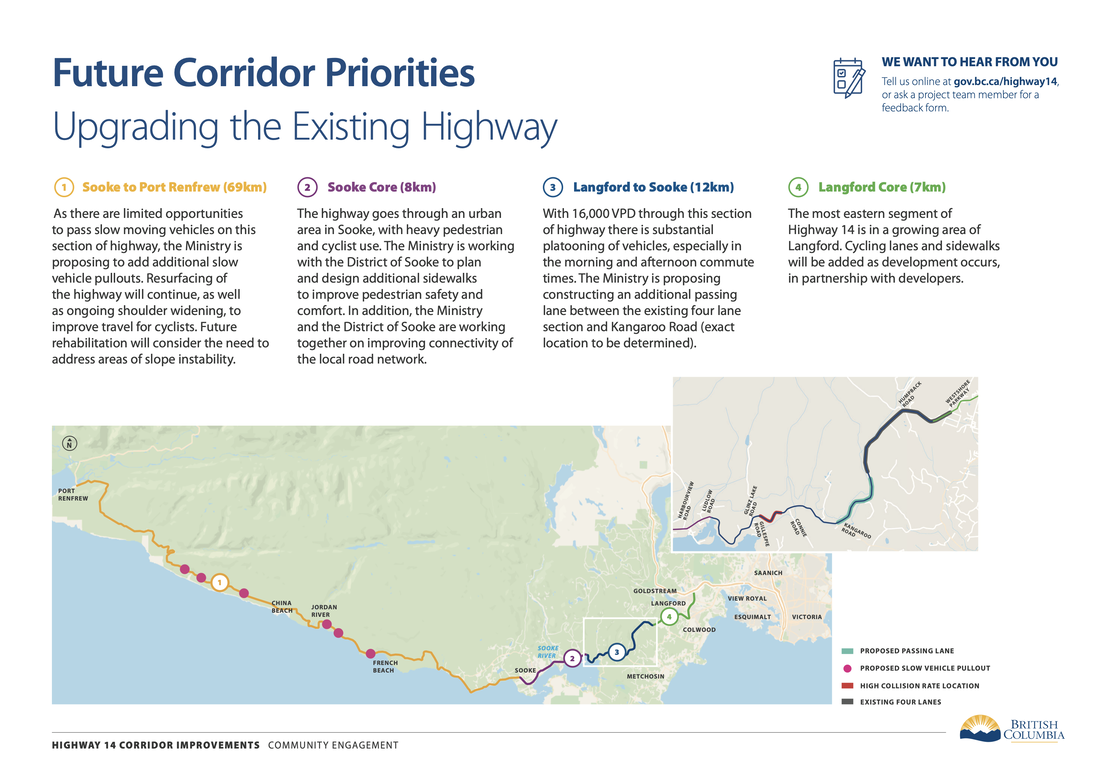
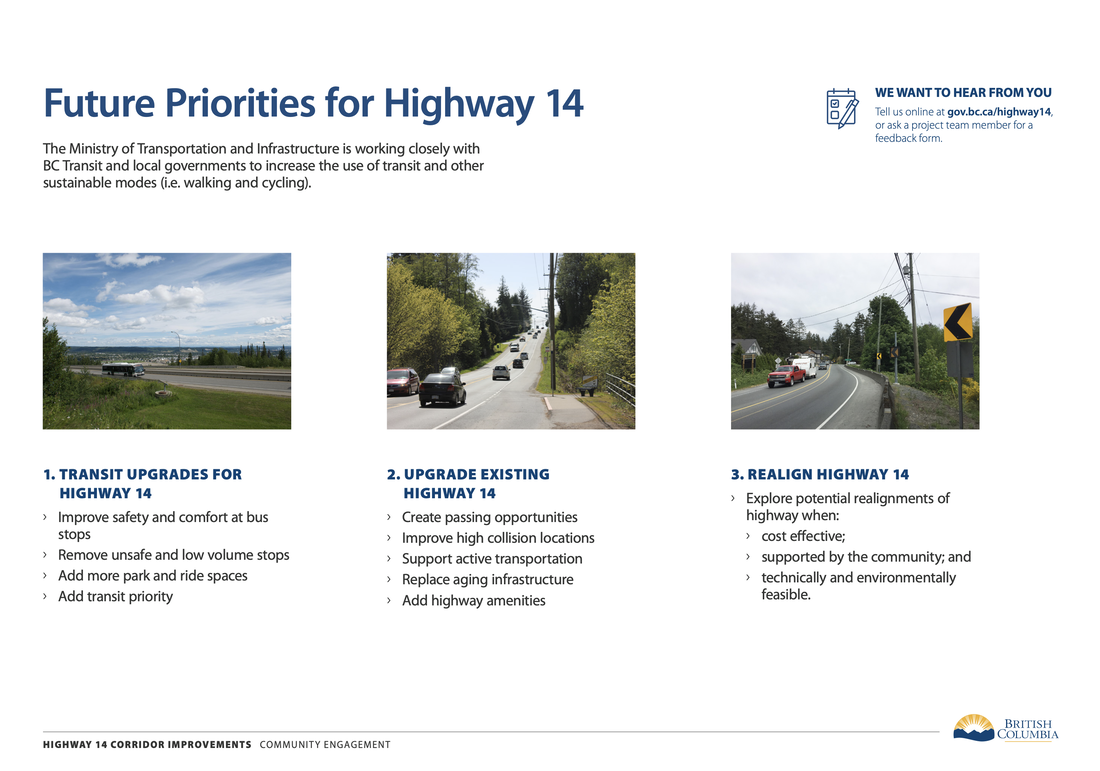
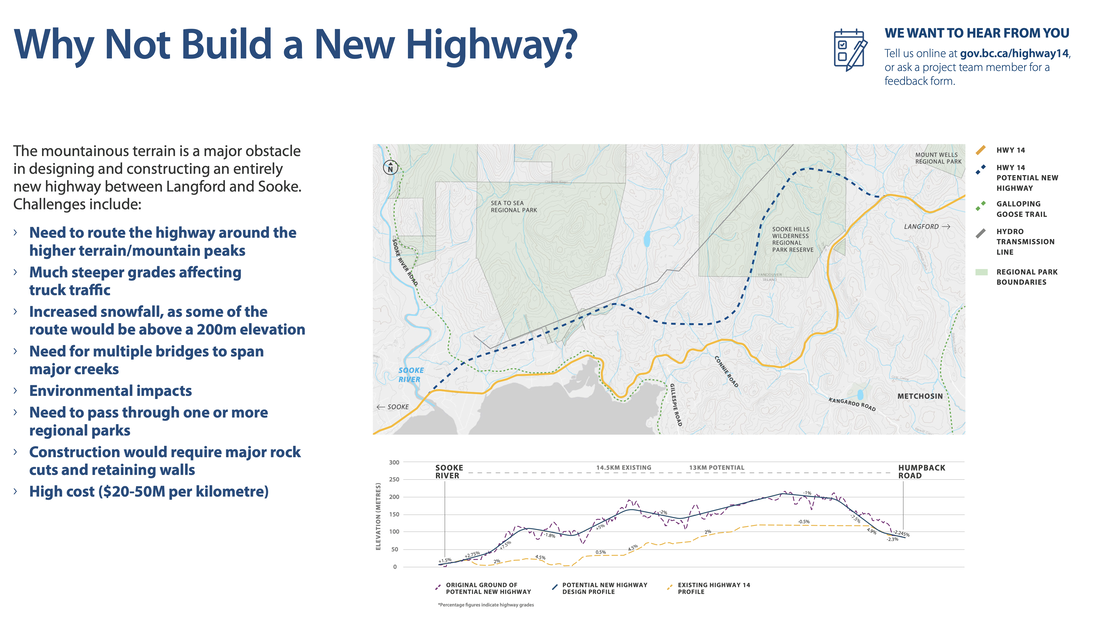
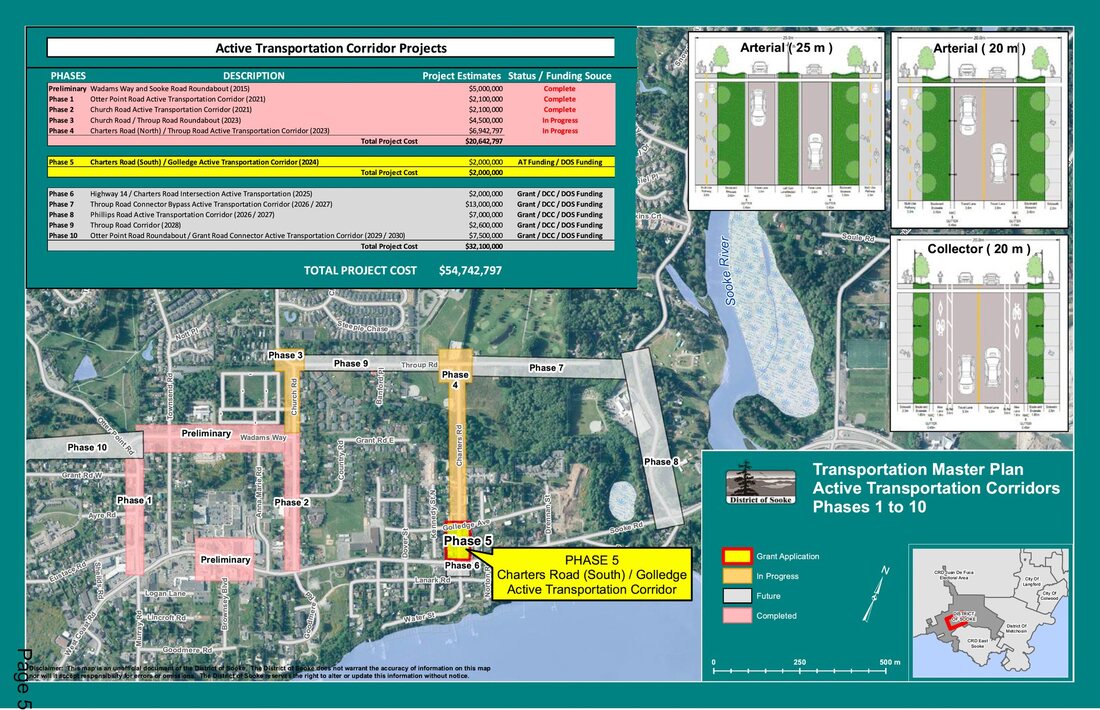
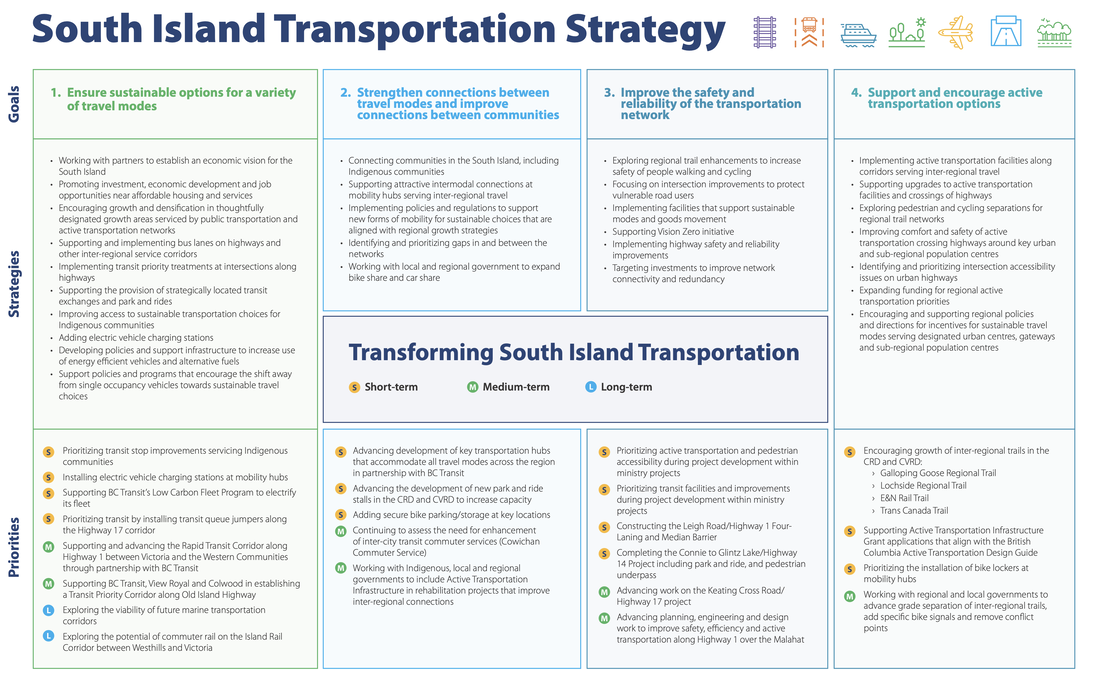
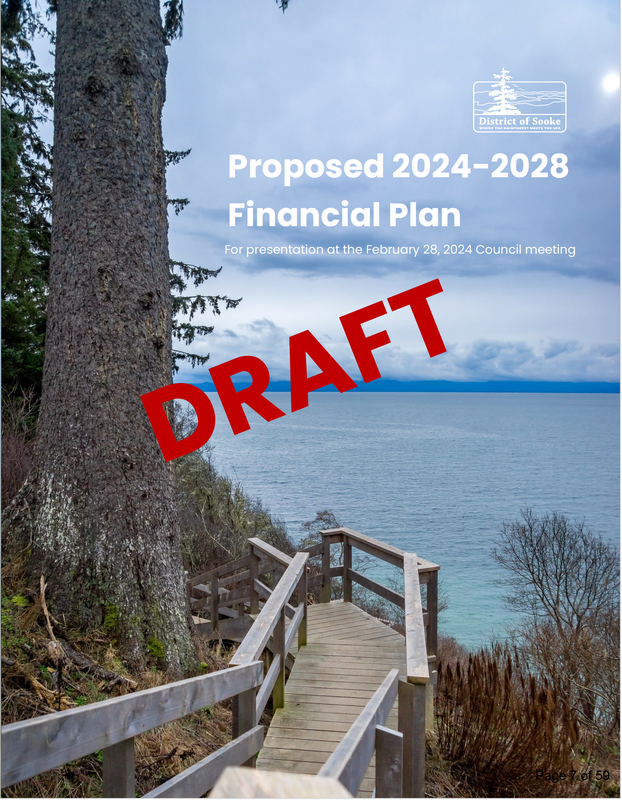
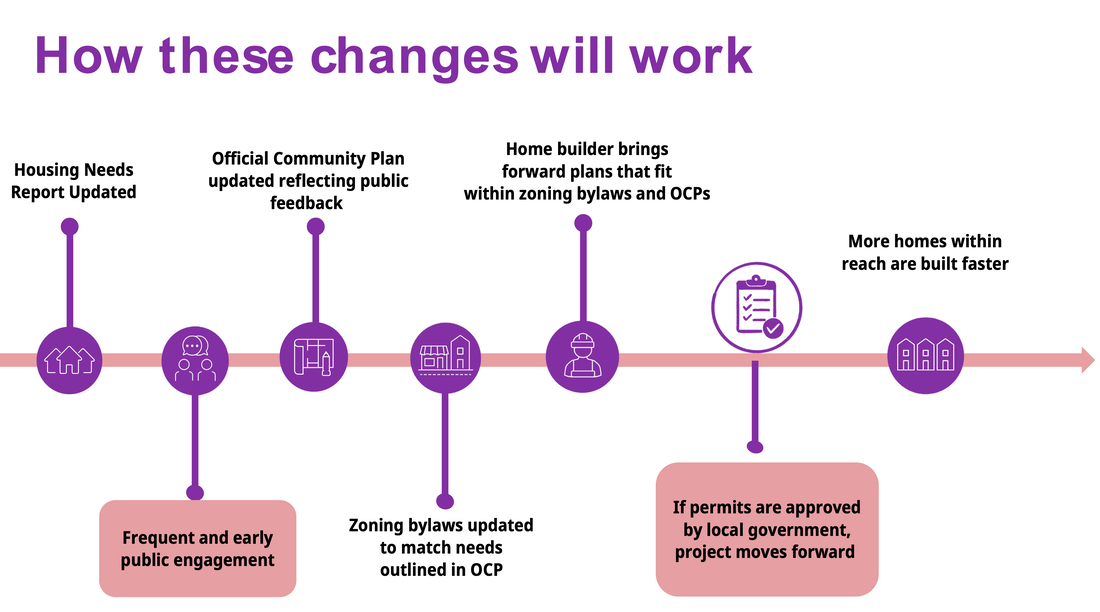
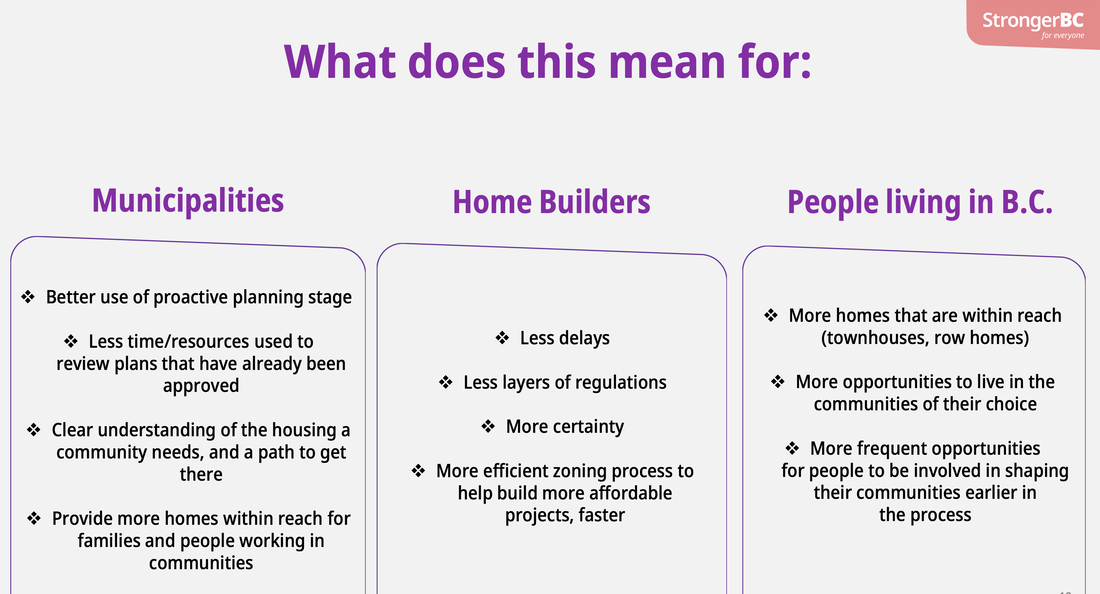
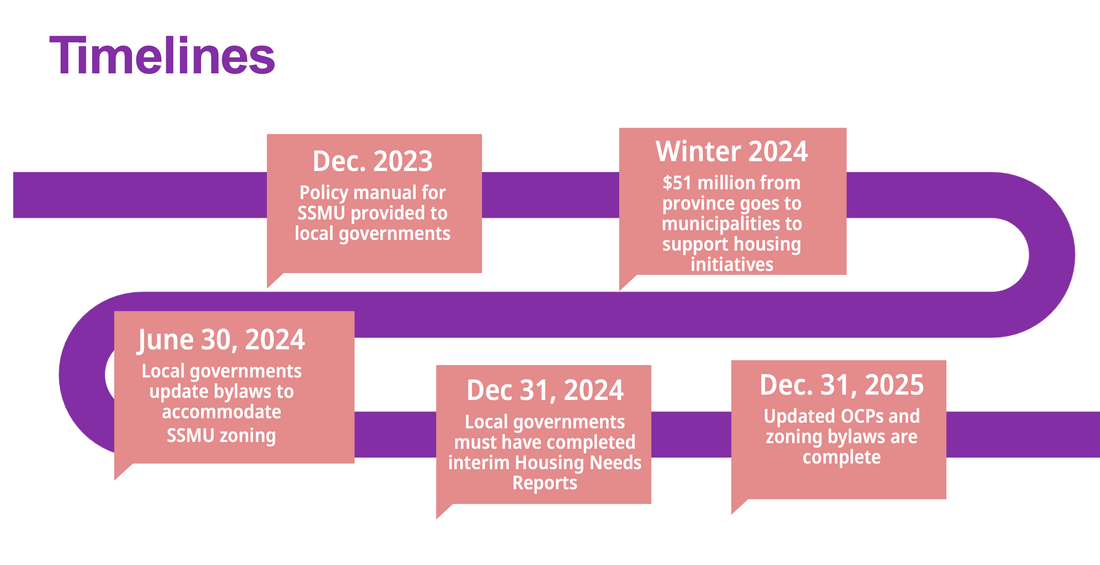
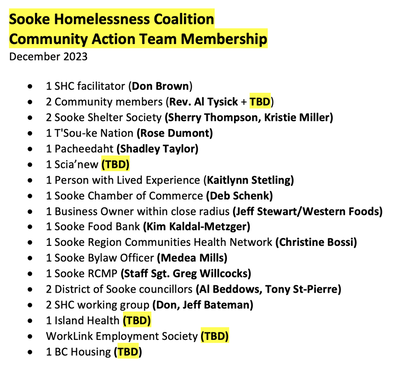
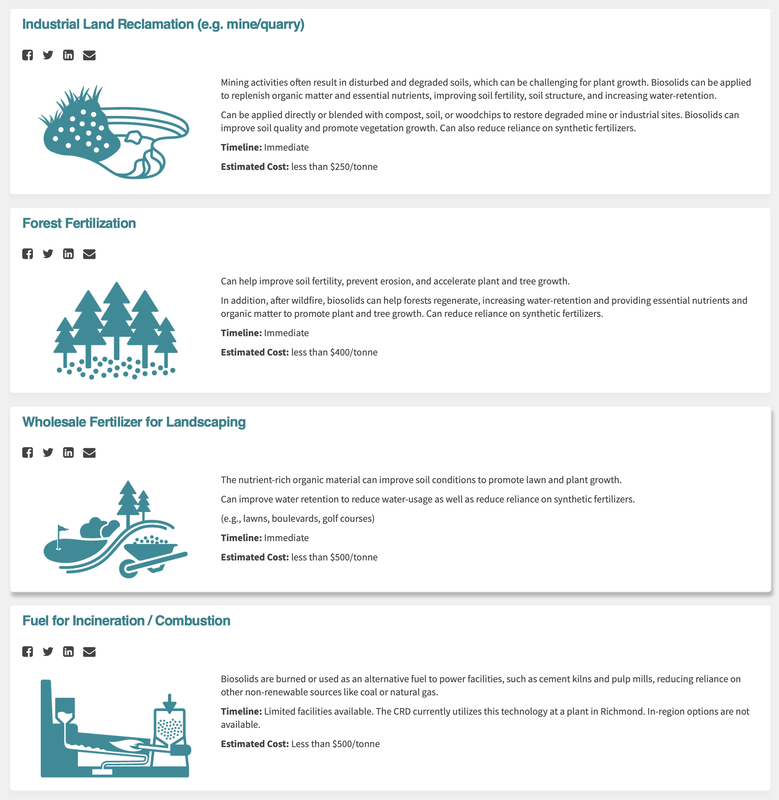
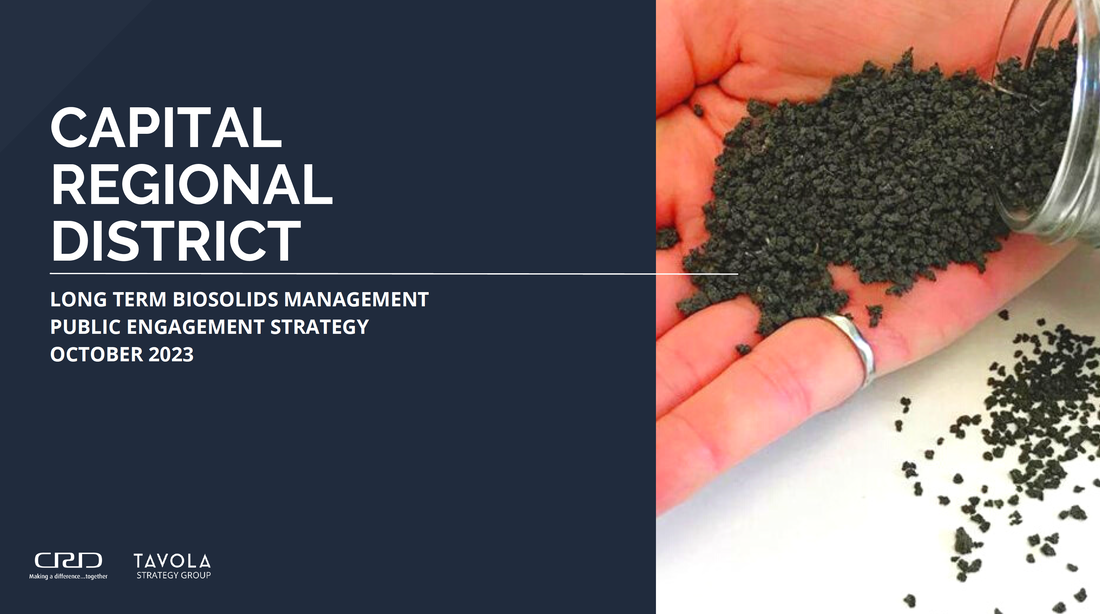


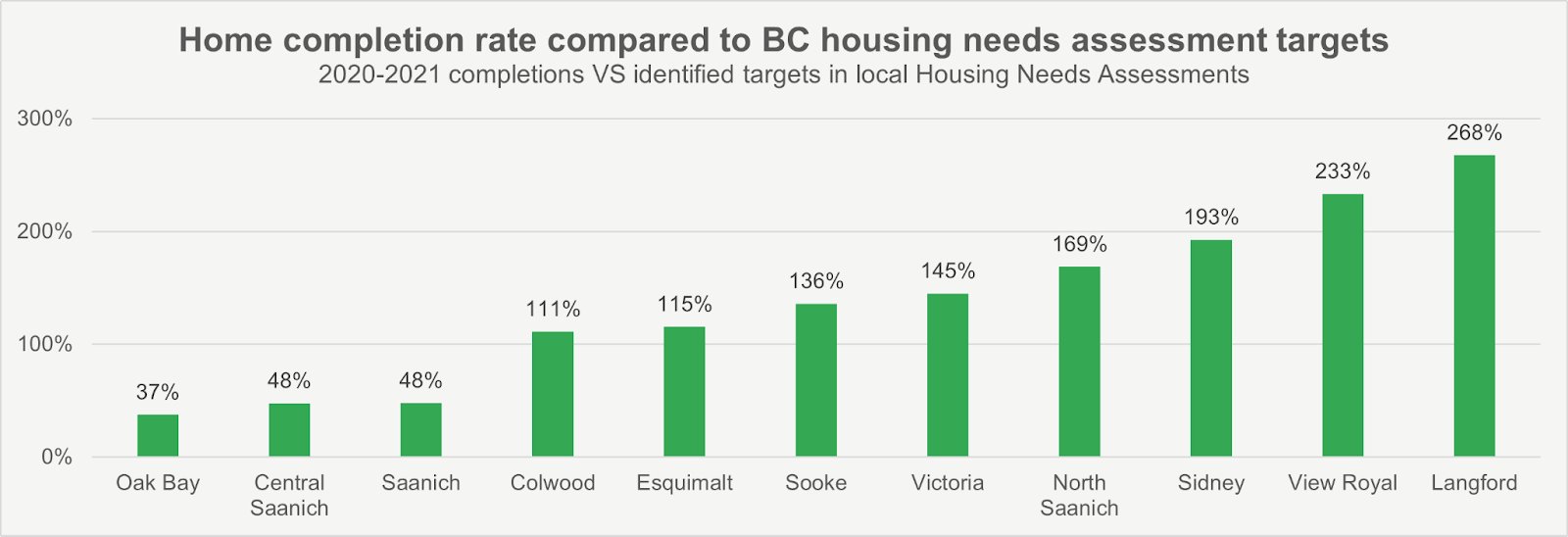
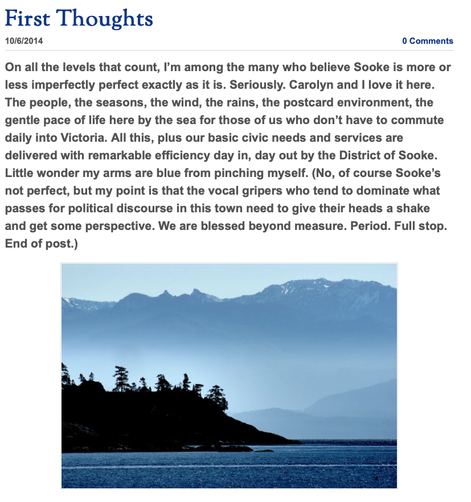
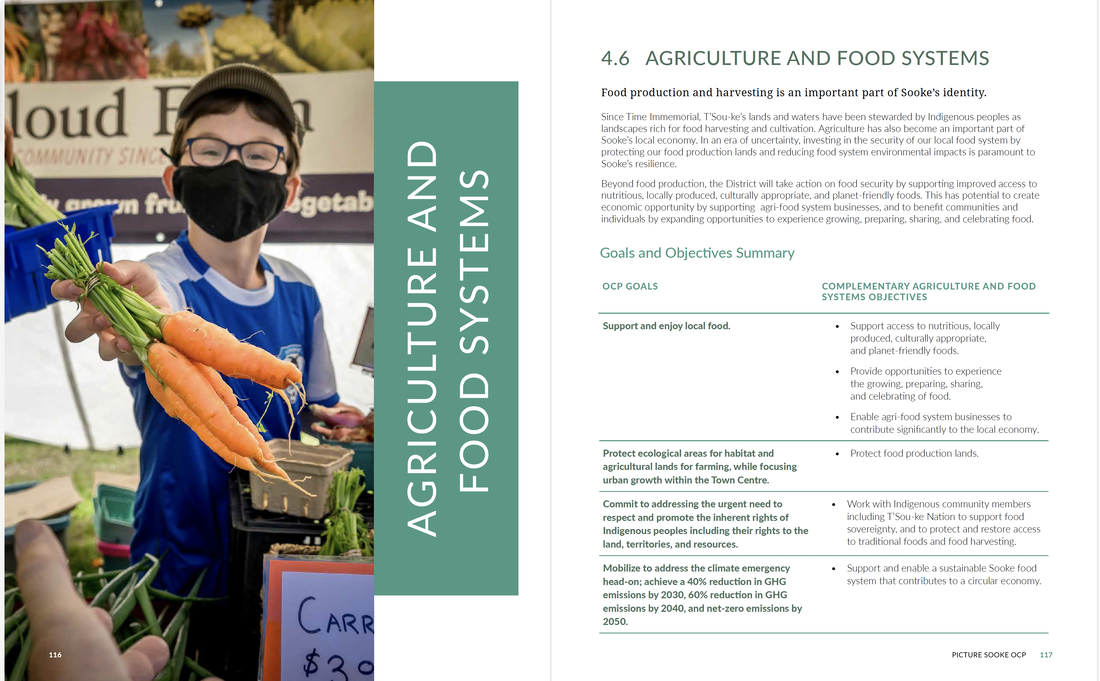
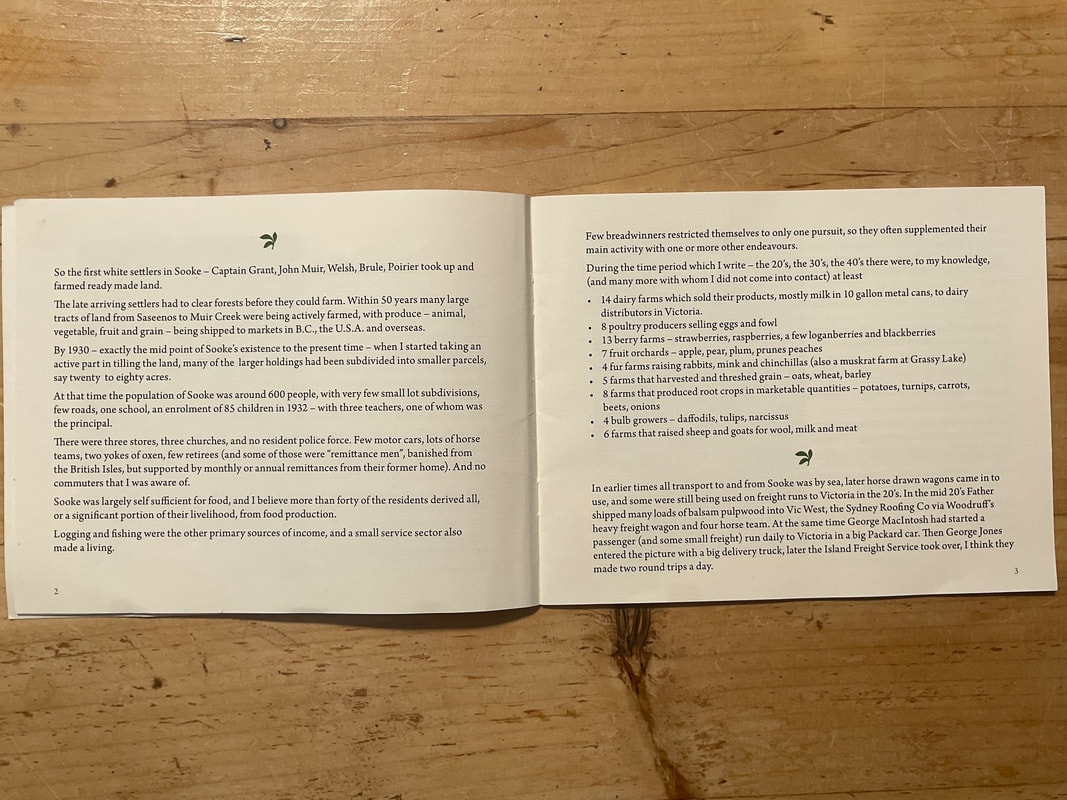

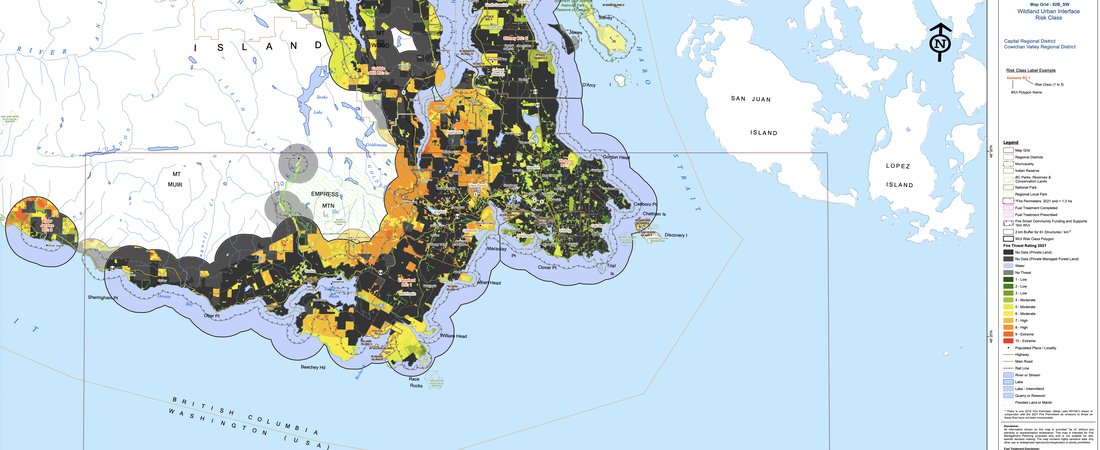
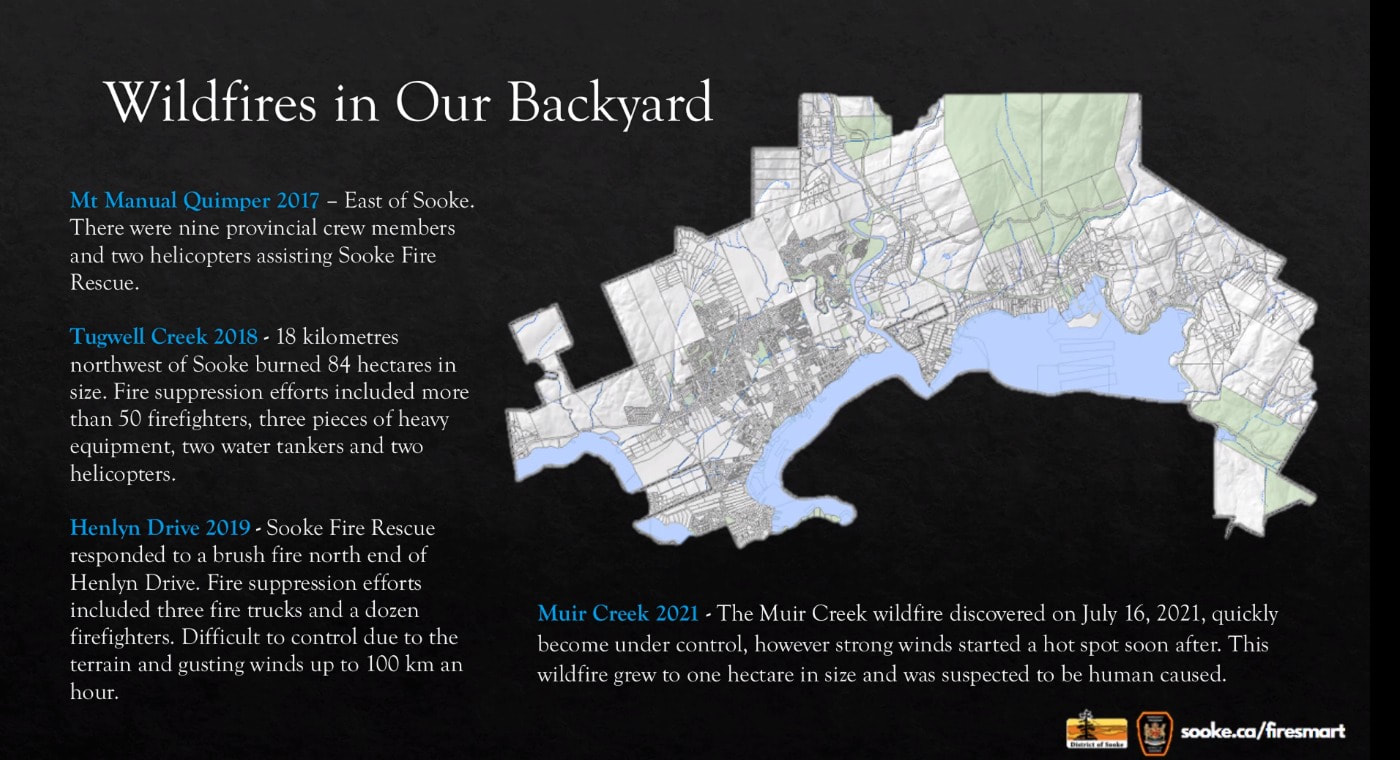
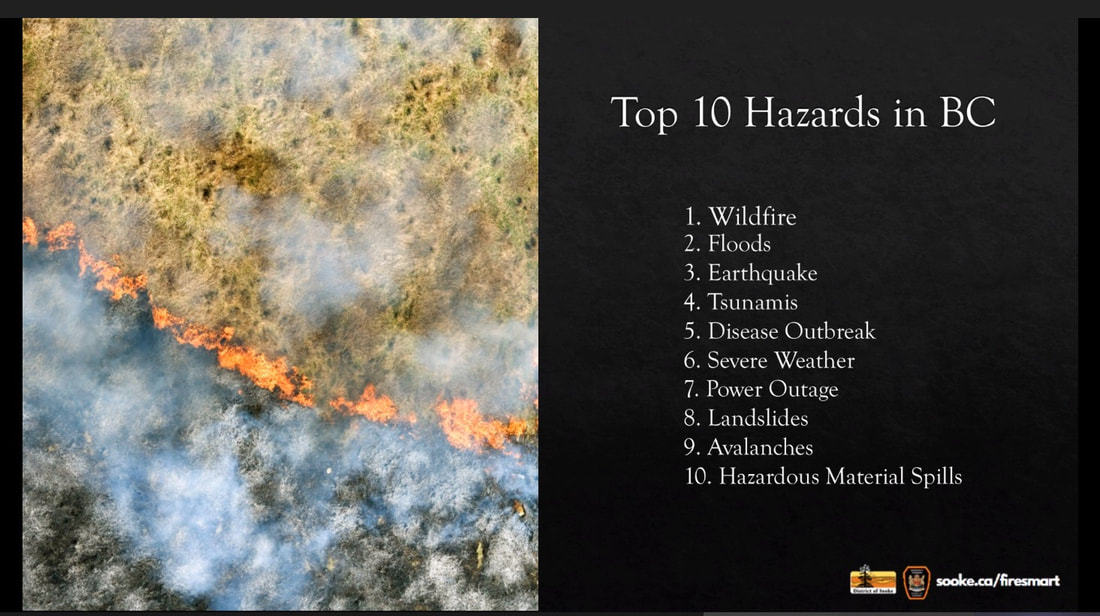
 RSS Feed
RSS Feed